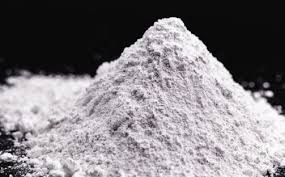Introduction to Calcium Carbonate Powder
Calcium carbonate powder is a common substance used in various industries, from construction to pharmaceuticals. This article explores the processes and operations in a factory where calcium carbonate powder is produced. Understanding these steps can give you insight into how this important material is made and used.
Raw Materials and Initial Processing
The journey of calcium carbonate powder begins with raw materials. The primary sources are limestone, marble, and chalk, which are rich in calcium carbonate. These materials are extracted through mining or quarrying. Once collected, they undergo initial processing to prepare them for further refinement.
The raw materials are first crushed into smaller pieces to make them easier to handle. This process is essential for breaking down large chunks of rock into manageable sizes. The crushed material is then screened to separate fine particles from larger ones. The finer particles are more suitable for the production of calcium carbonate powder.
Grinding and Classification
After the initial processing, the next step is grinding. The crushed material is fed into grinding mills where it is ground into a fine powder. This step is crucial for achieving the desired particle size and consistency of the calcium carbonate powder. The grinding process can vary depending on the intended use of the powder. For example, powders used in pharmaceuticals need to be much finer than those used in construction.
Once ground, the powder is classified to ensure it meets quality standards. This is done using air classifiers, which separate the powder based on particle size. The result is a range of products with different properties, each suited to specific applications.
Quality Control and Testing
Quality control is a critical aspect of calcium carbonate powder production. Samples of the powder are tested to ensure they meet industry standards. This testing includes checking for purity, particle size, and consistency. Any deviations from the required specifications are addressed to maintain the high quality of the final product.
The quality control process also involves monitoring the equipment and processes used in the factory. Regular maintenance and calibration of machines are necessary to prevent issues that could affect the quality of the calcium carbonate powder.
Packaging and Distribution
Once the calcium carbonate powder has passed all quality checks, it is ready for packaging. The powder is typically packed into bags or containers, depending on the needs of the customers. The packaging process is designed to protect the powder from contamination and ensure it remains in good condition during transport.
After packaging, the powder is distributed to various industries. It might be used in making cement, as a filler in paper, or as a dietary supplement, among other applications. Each industry has specific requirements for calcium carbonate powder, so factories often produce different grades and types to meet these needs.
Conclusion
A calcium carbonate powder factory involves several key steps, from processing raw materials to packaging the final product. Each stage is essential for producing a high-quality powder that meets industry standards. Understanding these processes helps appreciate the complexity and importance of this widely used material.

